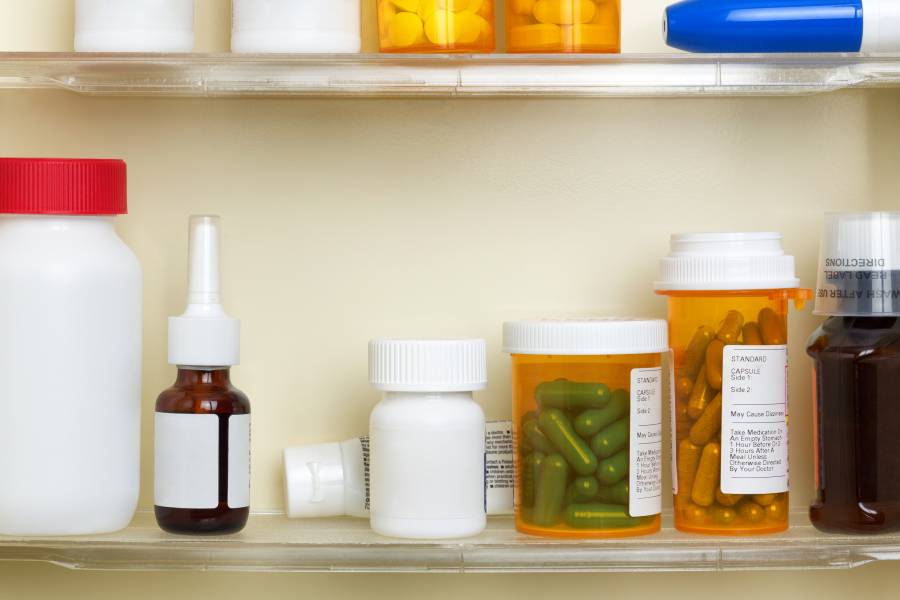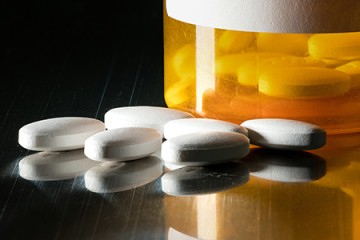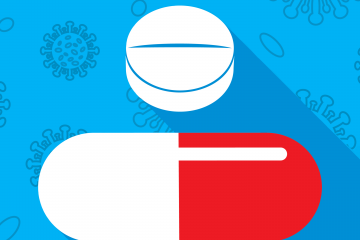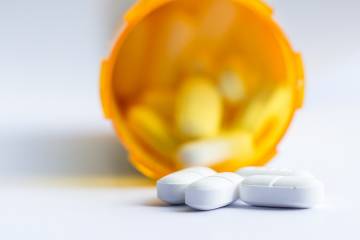Right now, in your medicine cabinet or perhaps a nightstand drawer lies a potentially deadly substance stored in a benign plastic bottle. Those remaining painkiller pills that soothed a sore back last year could be the equivalent of a lit fuse, as misuse of prescription drugs is a leading cause of poisoning, addiction and overdose deaths.
According to the most recent National Survey on Drug Use and Health, 9.7 million people misused prescription pain relievers, 4.9 million people misused prescription stimulants, and 5.9 million misused prescription tranquilizers or sedatives in just 2019 alone. That same year, 70,630 drug overdose deaths occurred in the United States, a 4% increase from 2018. The survey showed that a majority of misused prescription drugs were obtained from family and friends, often from the home medicine cabinet.
National Prescription Drug Take Back Day was launched in fall 2010 by the Drug Enforcement Administration to help address this crucial public safety and public health issue by taking these pills out of circulation. Since spring 2019, Johns Hopkins Medicine has participated with the DEA's Drug Take Back Day with two annual events, held in April and October, where people can drive up and drop off unused or expired prescription medications. The next event will be held Saturday from 10 a.m. to 2 p.m. at five locations: Johns Hopkins Bayview, Johns Hopkins Hospital, Howard County General Hospital, Sibley Memorial Hospital, and Johns Hopkins All Children's Hospital in Tampa, Florida.
During the October 2020 event, participating Johns Hopkins sites collected a total of 498 pounds of medication. Nationwide, this event brought in nearly a million pounds of unused, expired, and unwanted medications—the largest amount ever collected in the program's history. Including the Johns Hopkins Outpatient Pharmacy take-back bins, Johns Hopkins' total now exceeds 4,000 pounds (2 tons) of medication collected and disposed of in a safe, environmentally friendly way.
Busy Saturday? Search safe disposal locations on the DEA's website.
The Hub recently sat down with the event's coordinator Meghan Swarthout, division director of Ambulatory and Care Transitions with the Johns Hopkins Health System, and epidemiologist Caleb Alexander, co-director of the Johns Hopkins Center for Drug Safety and Effectiveness, to talk about drug take-back day and the larger issue of prescription drug misuse.
First, let's talk about the event. What medications are accepted and how are they disposed of?
Meghan Swarthout: We can accept tablets, capsules, liquids, creams, and now even e-cigarettes, vape pens, and sharps. We collect quite a variety of medications. Most of what we collect is incinerated or chemically deactivated, all done in a way that is environmentally friendly. None of this goes into the dump or into the water. Most water treatment plants are not designed to filter out medications, and we know from data that things like antibiotics end up in plant life and fish.
It's important to add there are no questions asked here. We like to say we don't collect your name, we just collect your medicines. People don't even have to get out of their car. They will pull up to a circle, and we have volunteers on hand who are masked and fully garbed with PPE since the pandemic started.
Growing up, seeing pill bottles on each medicine cabinet shelf was common—leftover medications from a dental surgery, a broken bone, a viral infection. When you think of home medicine cabinets stocked with these prescription pills, what goes through your mind?
Caleb Alexander: There are millions of households throughout the country with large numbers of partially used or unused prescription medicines. All too often, prescriptions get filled and they're not completed for one reason or another.
These take-back initiatives are very important. Fortunately, over the years we have moved from having single take-back days to greater and greater availability of take-back programs in hospitals and health systems, pharmacies, and other settings. We have an opportunity here for the safe storage and disposal of medicines that are just not needed any longer. These days are a wonderful opportunity for people to take a look in their bathroom cabinets and clear out those medicines, whether antibiotics or opioids, that are not only gathering dust but may pose a hazard. Many lives have been lost from medicines just sitting around unused.
What is the typical narrative here of what happens to these medicines just sitting around?
CA: We know from individuals reporting nonmedical opioid use, for example, that about half tell us that their pills were given by or taken from friends and family. The bottom line is there is enormous diversion of opioids and other potentially dangerous controlled substances from end users who have received these medicines from licensed prescribers.
But it's also not good medicine for people to be taking controlled substances on an ad hoc basis. If someone needs a new prescription, it's far safer to discuss this with their provider.
There is growing evidence that alcohol consumption has increased during the COVID-19 pandemic. Has prescription drug use, and more specifically opioid abuse, increased over the past year?
CA: I will say that opioid mortality has never been higher. And that despite some glimmers of hope, and signs of modest progress being made prior to the pandemic, that the efforts to abate injuries and deaths from opioids have been set back significantly. Not only that, but as you point out, drinking has increased among individuals as well, and the very same medicines that we're talking about are even more dangerous when they're combined with alcohol. The potential combination of alcohol with controlled substances, such as opioids or Benzodiazepines, only makes this potential risk that much greater.
MS: I would agree. And looking at the opioid surge, specifically in Maryland and across the board in almost all jurisdictions, we see that opioid overdose deaths are up, and we're hearing from health departments that patients are now dying alone due to the pandemic. So despite the important work around the use of Naloxone [a medication designed to rapidly reverse opioid overdose], you need individuals there to administer it, and in the world of social distancing, that is less feasible and that is contributing to increasing death rates. That is at the forefront of our minds. These take-back days alone will not fix the opioid epidemic, but it's one of many strategies we need to be using to help make these medications less available for someone to potentially start down the path of addiction.
Are events like these a time to rethink our use of prescription medications?
CA: I think that the opioid epidemic has certainly raised widespread awareness of the risks of these products. And any medicine, especially a controlled substance, has to be prescribed, used, and disposed of with caution and care. While opioids are inherently riskier than many other medicines, the risk depends on the context of use. The goal should be, as Meghan and her colleagues always say, to get the right patient the right medicine at the right time. But let's also look at the quantities dispensed. We know that the risks of opioids are dependent on dose and duration, and that all too often people have been dispensed far greater quantities than are necessary. One concrete step that clinicians and patients can take together to improve quality of care—and simultaneously reduce opioid supply—is to use smaller quantities of these products. If we prescribe fewer pills, there will be fewer pills left over, sitting on your kitchen counter at the end of the day.
Pharmaceutical companies play a role here, too. Is there something to say about pending litigation against these companies?
CA: We recently launched the Opioid Industry Documents Archive, which is an effort to ultimately put millions of documents arising from opioid litigation into the public domain. One linkage with that effort and this story is that what is likely to come out of these documents is greater insight into just how we've ended up with vastly more opioids than needed in all our homes. In other words, the fact that there are unused opioids sitting in prescription bottles in millions of households around the country is a reflection of just how widely these drugs have been over supplied during the past two decades. This archive shines the bright light of day on some of the policies and practices of manufacturers and other parties in the pharmaceutical supply chain that have helped drive this epidemic.
We're talking a lot about opioids, but that isn't the only drug sitting unused in cabinets.
MS: Something we haven't talked about but is certainly a problem is accidental poisonings, especially with young children. And that is something that parents, caregivers, and my pediatric colleagues say is one more of the benefits of national drug take-back days, getting these potentially dangerous drugs out of harm's reach. These drugs could range from oral chemotherapy, which is inherently dangerous, to really any medication taken in large quantities, which can be toxic.
On days other than National Prescription Drug Take Back Day, safe disposal locations can be found on the DEA's website.
Posted in Health, Voices+Opinion
Tagged prescription drugs, opioids












